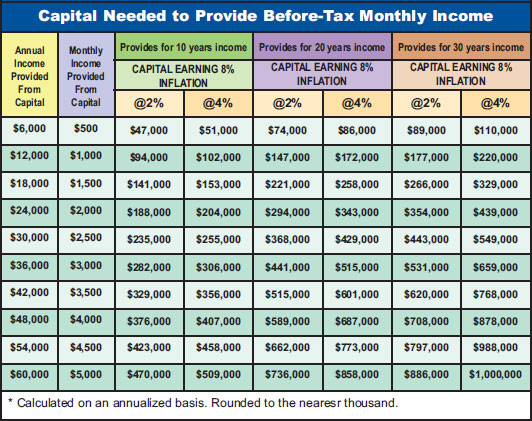
A spirit of independence and optimism is typical of many business owners. It is important to realistically plan for your financial security should you become disabled.
When you own your own business, you do not have the security of group insurance that employees have. After several years, you may find that you are drawing a substantial income from a successful venture.
Disability planning brings us face-to-face with a reality check. If you become disabled, would your business continue to generate the same profits? If not, how would you meet your mortgage payments and pay for your groceries? When we are independent-minded, we tend to be optimistic, to the degree that we might believe one of the following money myths.
Money Myth #1. I will borrow the money until I get well. Reality: Few people will lend money to a disabled person. It’s hard enough to borrow money when you’re in perfect health with a steady income.
Money Myth #2. I’ll live off my savings. Reality: How long would your savings last? Using up your savings at an age when you ought to add to your investments may ruin your retirement plan.
Money Myth #3. I’ll sell off some or all of my business assets.
Reality: How many assets does your business own, that are not required for its successful operation? Who will pay fair market value to one perceived as liquidating out of a dire need for cash? The timing may not coincide with market demand for your assets.
Money Myth #4. My business will pay me a salary. Reality: Your partners may need to hire someone to fulfil your responsibilities. Flip the perspective around. If your partner became disabled, how long could you keep paying him or her a salary in addition to the salary for the replacement? If you are a sole proprietor and disabled to the degree you cannot work, how could you hire and train someone to work hard enough to produce his own salary and yours?
Business Owner Disability Insurance Check-List
- Income Replacement Insurance Pays you a cheque to cover a major portion of your present income drawn from the company.
- Key-Person Insurance Pays a benefit to enable the business to hire a replacement.
- Office Overhead Insurance Helps you pay for day-to-day overhead and salaries.
- Buy-Sell Insurance Creates the cash to allow your partners to buy out your interest, or vice versa, based on a written agreement.






 The following largely coincides with the guidance of the IRA’s information. The Information can change over time and your advisor and/or tax professional should be consulted.
The following largely coincides with the guidance of the IRA’s information. The Information can change over time and your advisor and/or tax professional should be consulted.









 Many who own family businesses, will move into retirement over the next two decades. A delicate process referred to as “succession” or “business continuity” planning can lead to relinquishing leadership roles while transferring their businesses to the next generation.
Many who own family businesses, will move into retirement over the next two decades. A delicate process referred to as “succession” or “business continuity” planning can lead to relinquishing leadership roles while transferring their businesses to the next generation.